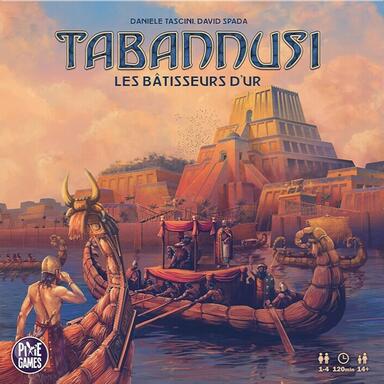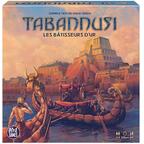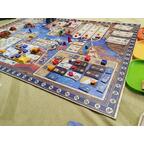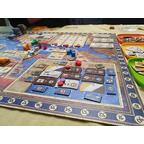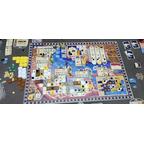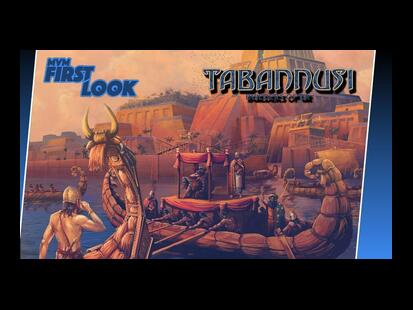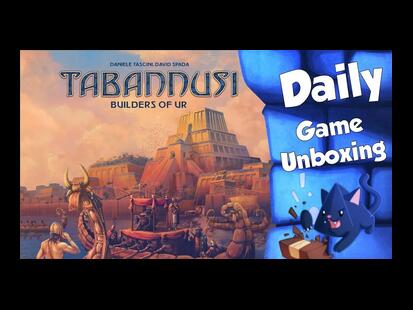Set in ancient Mesopotamia, the cradle of civilisation, at a time when Ur's location was a coastal region, players work to build the great city of Ur, expand its neighbourhoods and establish themselves as powerful builders. Tabannusi: Builders of Ur features a beautiful board showing the city of Ur divided into 5 regions, each linked to a specific coloured die. There are 3 building districts, 1 temple district, and 1 port district. Each turn, your worker will activate one of these districts. When you activate a district, you must first take a district die. This die corresponds to the colour of the district and has two functions: 1) The die itself becomes a resource of its colour. 2) The value of the die determines which district your worker will activate the next turn.
Through various actions, you can extend your influence in the different districts, by developing yards and turning them into buildings to score valuable victory points. But you can also use your influence in the temple district to gain favour with the king. In the harbour district, you can obtain ships with important abilities and score victory points. You must spend your actions wisely and always keep an eye on the general timing of the game. As soon as a district is cleared of dice, a score is made.
Rule, Educational Sheet ... 2 Files Available2 Files Available
Download the rule for Tabannusi: Les Bâtisseurs d'Ur or any other documents (scenarios, goodies, pedagogical sheet, erratum, ...). 2 PDF files are available. See all available files
Contents of the box : 1 double-sided board, 6 individual boards, 5 barge tiles, 5 property cost tiles, 6 action tiles, 15 ship tiles, 9 harbour master tiles, 60 project tiles, 30 water tiles, 25 garden tiles, 16 decree cards, 15 settlement cards, 10 ziggurat tiles, 20 crate tiles, 32 gold tokens, 60 control markers, 12 mastery markers, 4 score markers, 4 architects, 4 assistants, 56 houses, 75 buildings, 55 resource dice, 1 first-player token, 1 rule book.
